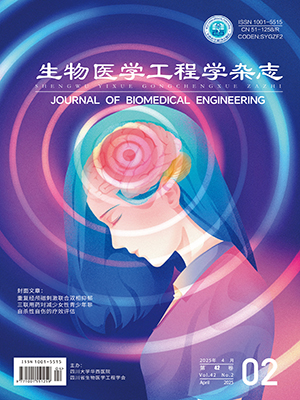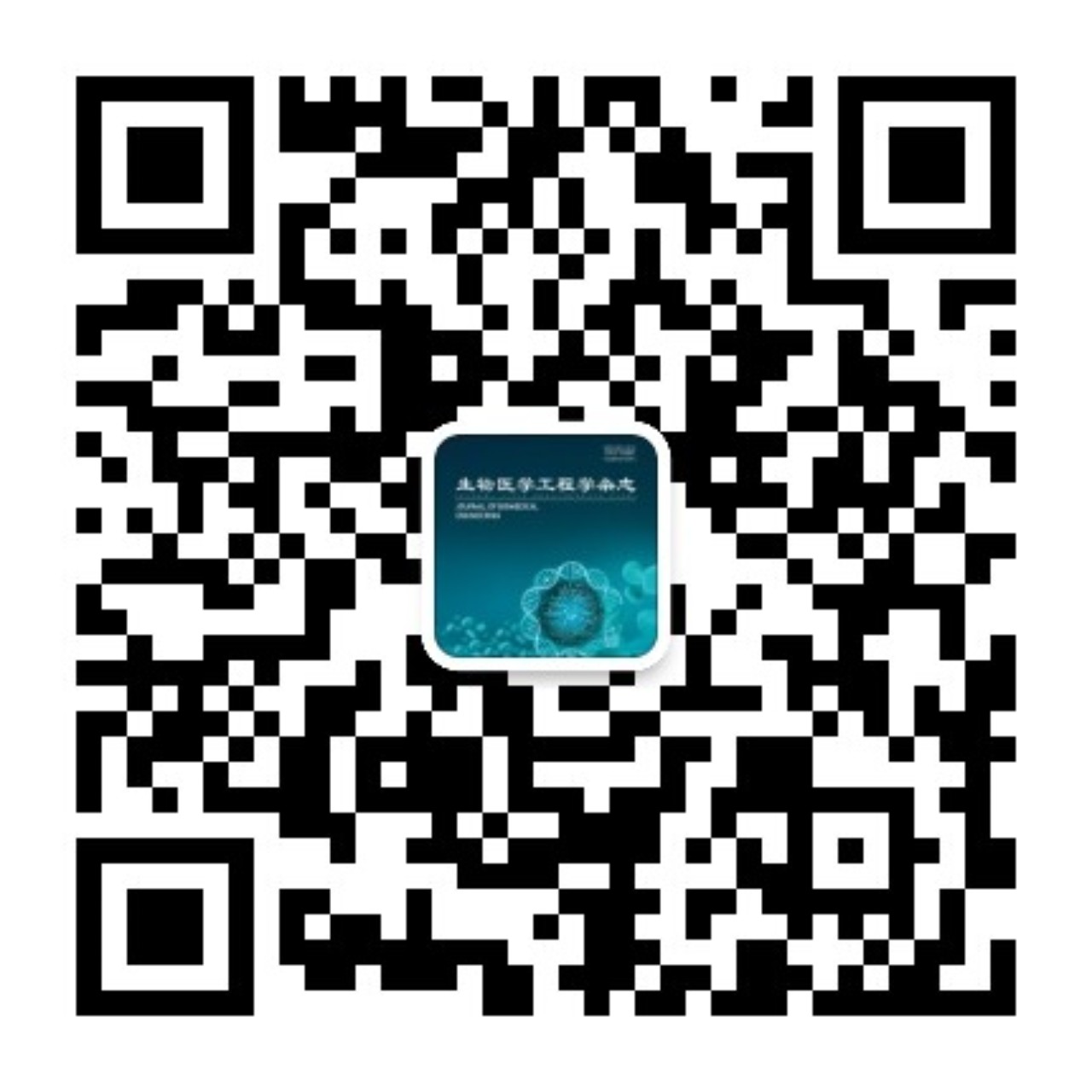Existing near-infrared non-invasive blood glucose detection modelings mostly detect multi-spectral signals with different wavelength, which is not conducive to the popularization of non-invasive glucose meter at home and does not consider the physiological glucose dynamics of individuals. In order to solve these problems, this study presented a non-invasive blood glucose detection model combining particle swarm optimization (PSO) and artificial neural network (ANN) by using the 1 550 nm near-infrared absorbance as the independent variable and the concentration of blood glucose as the dependent variable, named as PSO-2ANN. The PSO-2ANN model was based on two sub-modules of neural networks with certain structures and arguments, and was built up after optimizing the weight coefficients of the two networks by particle swarm optimization. The results of 10 volunteers were predicted by PSO-2ANN. It was indicated that the relative error of 9 volunteers was less than 20%; 98.28% of the predictions of blood glucose by PSO-2ANN were distributed in the regions A and B of Clarke error grid, which confirmed that PSO-2ANN could offer higher prediction accuracy and better robustness by comparison with ANN. Additionally, even the physiological glucose dynamics of individuals may be different due to the influence of environment, temper, mental state and so on, PSO-2ANN can correct this difference only by adjusting one argument. The PSO-2ANN model provided us a new prospect to overcome individual differences in blood glucose prediction.
Citation:
DAI Juan, JI Zhong, DU Yubao. The research of near-infrared blood glucose measurement using particle swarm optimization and artificial neural network. Journal of Biomedical Engineering, 2017, 34(5): 713-720. doi: 10.7507/1001-5515.201611010
Copy
Copyright © the editorial department of Journal of Biomedical Engineering of West China Medical Publisher. All rights reserved
| 1. |
Laakso M. Glycemic control and the risk for coronary heart disease in patients with non-insulin-dependent diabetes mellitus. The Finnish studies. Ann Intern Med, 1996, 124(1 Pt 2): 127-130.
|
| 2. |
季忠, 秦子辉, 程星星, 等. 血糖无创检测原理及仪器实现研究. 生物医学工程学杂志, 2010, 27(1): 222-226.0.
|
| 3. |
Unnikrishna Menon K A, Hemachandran D, Abhishek, T K. A survey on non-invasive blood glucose monitoring using NIR//International Conference on Communications and Signal Processing. ICCSP 2013. Melmaruvathur, India: IEEE, 2013: 1069-1072.
|
| 4. |
Yadav J, Rani A, Singh V, et al. Near-infrared LED based non-invasive blood glucose sensor//2014 International Conference on Signal Processing and Integrated Networks (SPIN). Noida, India: IEEE, 2014: 591-594.
|
| 5. |
Chuah Z M, Paramesran R, Thambiratnam K, et al. A two-level partial least squares system for non-invasive blood glucose concentration prediction. Chemometrics and Intelligent Laboratory Systems, 2010, 104(2): 347-351.
|
| 6. |
Yamakoshi Y, Ogawa M, Tamura T. Multivariate regression and classification models for estimation of blood glucose levels using a new non-invasive optical measurement technique named " <italic>pulse glucometry</italic>”. The Open Optics Journal, 2009, 3: 63-69.
|
| 7. |
张婉洁, 刘蓉, 徐可欣. 基于平行因子分析法提高近红外无创血糖校正模型稳健性的研究. 化学学报, 2013, 71(9): 1281-1286.0.
|
| 8. |
杨星, 季忠, 杨力, 等. 近红外透射法血糖无创检测光学子系统的构建与分析. 中国生物医学工程学报, 2012, 31(1): 147-150.0.
|
| 9. |
章鸣嬛, 陈瑛, 沈瑛, 等. 人工神经网络和支持向量机性能比较及其在 DMD 疾病识别中的应用. 上海理工大学学报, 2016, 38(4): 346-351.0.
|
| 10. |
蒋晓屾. 粒子群算法在多维优化问题中的改进研究. 杭州: 浙江理工大学, 2016.
|
| 11. |
谢志斌. 神经网络软测量模型优化方法在血糖浓度预测中的应用. 镇江: 江苏大学, 2016.
|
- 1. Laakso M. Glycemic control and the risk for coronary heart disease in patients with non-insulin-dependent diabetes mellitus. The Finnish studies. Ann Intern Med, 1996, 124(1 Pt 2): 127-130.
- 2. 季忠, 秦子辉, 程星星, 等. 血糖无创检测原理及仪器实现研究. 生物医学工程学杂志, 2010, 27(1): 222-226.0.
- 3. Unnikrishna Menon K A, Hemachandran D, Abhishek, T K. A survey on non-invasive blood glucose monitoring using NIR//International Conference on Communications and Signal Processing. ICCSP 2013. Melmaruvathur, India: IEEE, 2013: 1069-1072.
- 4. Yadav J, Rani A, Singh V, et al. Near-infrared LED based non-invasive blood glucose sensor//2014 International Conference on Signal Processing and Integrated Networks (SPIN). Noida, India: IEEE, 2014: 591-594.
- 5. Chuah Z M, Paramesran R, Thambiratnam K, et al. A two-level partial least squares system for non-invasive blood glucose concentration prediction. Chemometrics and Intelligent Laboratory Systems, 2010, 104(2): 347-351.
- 6. Yamakoshi Y, Ogawa M, Tamura T. Multivariate regression and classification models for estimation of blood glucose levels using a new non-invasive optical measurement technique named " <italic>pulse glucometry</italic>”. The Open Optics Journal, 2009, 3: 63-69.
- 7. 张婉洁, 刘蓉, 徐可欣. 基于平行因子分析法提高近红外无创血糖校正模型稳健性的研究. 化学学报, 2013, 71(9): 1281-1286.0.
- 8. 杨星, 季忠, 杨力, 等. 近红外透射法血糖无创检测光学子系统的构建与分析. 中国生物医学工程学报, 2012, 31(1): 147-150.0.
- 9. 章鸣嬛, 陈瑛, 沈瑛, 等. 人工神经网络和支持向量机性能比较及其在 DMD 疾病识别中的应用. 上海理工大学学报, 2016, 38(4): 346-351.0.
- 10. 蒋晓屾. 粒子群算法在多维优化问题中的改进研究. 杭州: 浙江理工大学, 2016.
- 11. 谢志斌. 神经网络软测量模型优化方法在血糖浓度预测中的应用. 镇江: 江苏大学, 2016.




